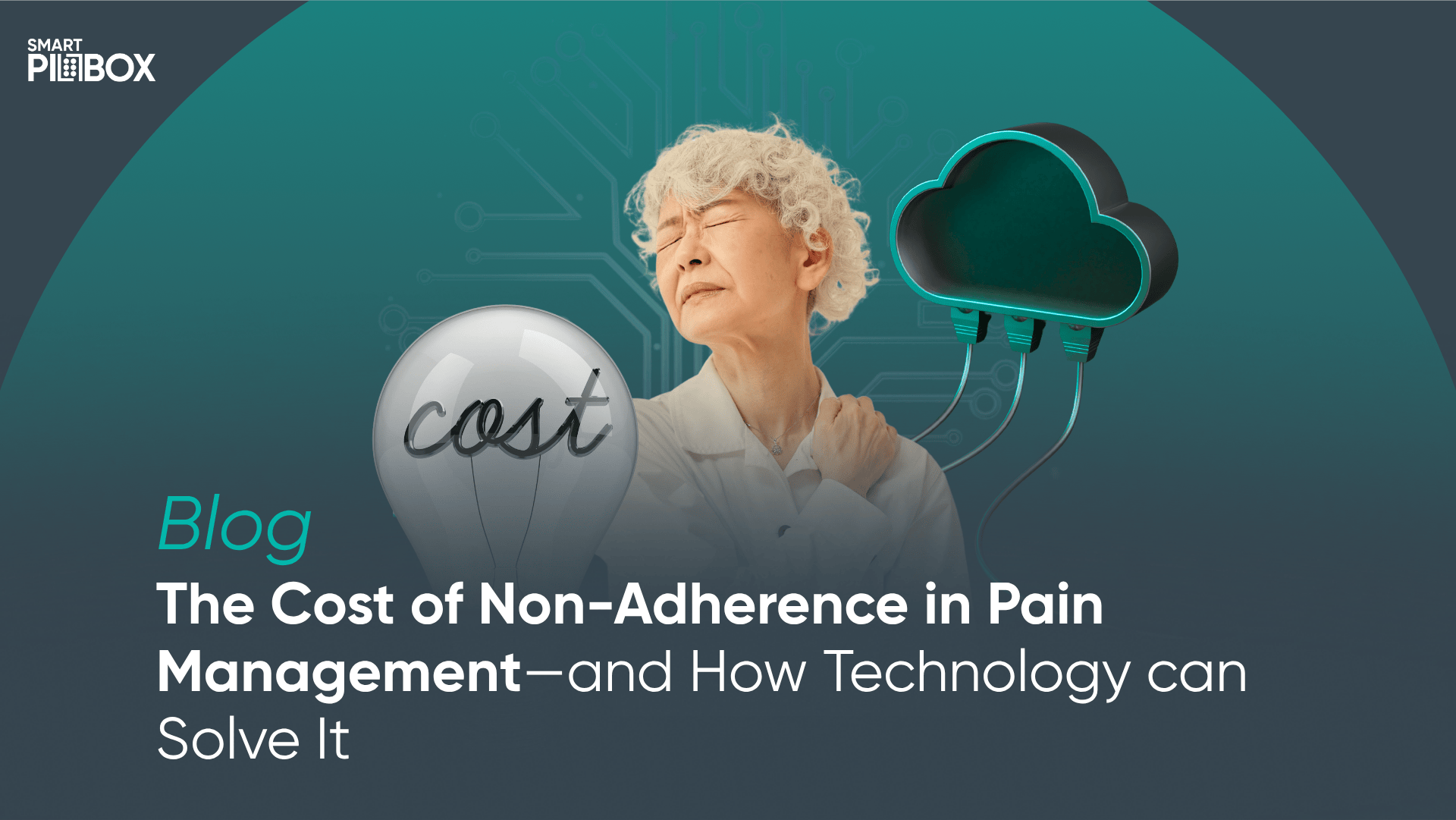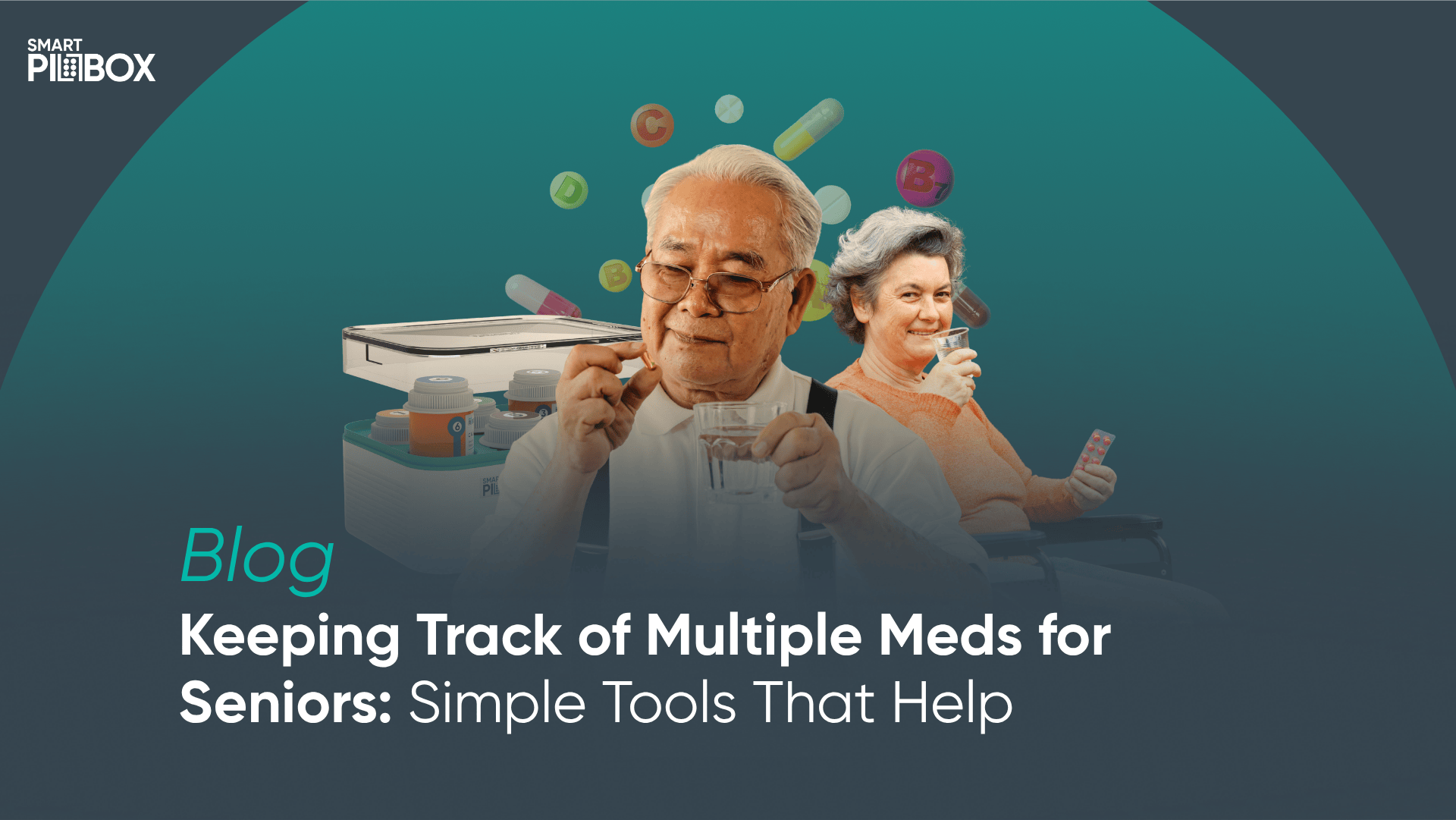The Cost of Non-Adherence in Pain Management— and How Technology can Solve It

Pain management is one of the most delicate parts of modern healthcare. Patients walk into clinics hoping for relief, often after months or even years of discomfort. Providers want to help, but they also know that prescribing pain medication is a high-stakes responsibility. It is a balancing act between easing suffering and preventing misuse. And right at the center of this challenge is a problem that often goes unnoticed until it creates serious consequences: non-adherence.
When patients do not take medications as prescribed, it is not just a personal issue. It has ripple effects on safety, outcomes, clinic operations, and even community health. In pain management, where controlled substances like opioids are frequently used, non-adherence can be particularly dangerous.
This is where technology is starting to step in. From smart devices to adherence tracking, new solutions are reshaping how providers monitor and manage controlled prescriptions. And for pain management practices, the shift could not come at a better time.
Why Non-Adherence in Pain Management Matters
When someone is given medication for a chronic condition, the expectation is that they will follow instructions closely. But the reality is more complicated. Non-adherence can mean skipping doses, taking too many doses, or stopping medication altogether.
In pain management, these patterns create significant risks:
- Underdosing leaves patients in pain, which reduces their trust in treatment and can send them searching for relief elsewhere.
- Overdosing increases the chance of dependency, misuse, or even overdose.
- Stopping abruptly can trigger withdrawal symptoms or worsen the original condition.
According to the National Library of Medicine, medication non-adherence contributes to nearly 125,000 deaths annually in the United States. While this figure spans multiple therapeutic areas, pain management is one of the most at-risk because of the use of controlled substances.
For providers, every missed dose or every double dose is more than just a clinical concern. It can raise red flags with regulators, strain relationships with patients, and expose the practice to compliance risks.
The Hidden Costs for Clinics and Providers
When patients are not adherent, the costs do not only fall on them. Clinics carry a heavy burden too.
- Increased risk of opioid misuse
Even a single patient who misuses medication can create devastating outcomes for families and communities. Providers are often the first to face questions about how that misuse happened. - Regulatory and compliance pressure
Pain management providers already live under close DEA oversight. Inconsistent adherence records or gaps in monitoring can expose clinics to audits or penalties. - Lost trust and patient turnover
Patients who do not feel better may assume treatment is not working and stop coming back. At the same time, providers may need to cut ties with patients who show patterns of misuse, leading to turnover and more administrative strain. - Financial costs
Every readmission, emergency visit, or new consultation adds costs to the healthcare system, which is already stretched thin by the opioid crisis. Clinics also spend time and resources chasing information they could have captured more efficiently with the right technology.
Why Traditional Approaches Fall Short
Historically, providers have relied on a mix of patient self-reporting, pill counts, and urine drug screens to assess adherence. These methods offer some visibility but fall short in several ways:
- Self-reporting depends on honesty and memory, which are unreliable.
- Pill counts only show what is left in the bottle, not whether doses were taken correctly.
- Drug screens provide information after the fact, often when it is already too late.
In a world where patients are mobile, prescriptions are complex, and the opioid epidemic is still ongoing, these traditional methods simply are not enough. Providers need real-time tools that bridge the gap between prescription and actual use.
How Technology is Changing the Game
This is where innovation comes in. New tools are providing pain management practices with fresh ways to monitor adherence and protect both patients and providers.
Pain management medication monitoring
Modern digital solutions now allow providers to monitor patient medication use more closely. By tracking every dose, clinicians gain visibility into patterns that might indicate misuse or non-compliance.
Controlled substance adherence technology
Devices like Smart PillCaps record exactly when a dose is taken. This creates a digital log that can be shared securely with providers. It is no longer just about what patients say—they can now show evidence of consistent use.
Preventing opioid misuse in clinics
By combining data from these devices with clinical judgment, providers can identify red flags early. For example, if a patient is consistently taking doses too close together, the system can flag it before it spirals into dependency.
Smart pill bottle for controlled substances
The most promising solutions go beyond reminders. A smart pill bottle for controlled substances does not just beep or buzz—it tracks, records, and reports. That information gives providers proof that medications are being used correctly.
Patient safety in pain management
Ultimately, the goal of technology is not just compliance but safety. Patients deserve relief without unnecessary risks, and providers deserve tools that make it possible to deliver that relief responsibly.
A Closer Look: What This Means for Patients
For patients, this type of technology offers more than just monitoring. It can actually improve their care experience.
- Fewer misunderstandings
Patients can show their providers how well they are following the plan, which builds trust. - More personalized care
With clear adherence data, providers can adjust treatment plans based on real behavior, not guesswork. - Peace of mind
Patients and families know there is an added layer of protection against mistakes or misuse.
When patients feel supported rather than policed, they are more likely to stay engaged with treatment.
What This Means for Providers and Clinics
For providers, adopting pain management medication monitoring is more than just a clinical upgrade. It is a safeguard.
- Clear documentation for compliance
Controlled substance adherence technology creates a digital record that providers can use to demonstrate responsible prescribing practices. - Early intervention opportunities
The data allows providers to step in before misuse escalates. - Better outcomes and reputation
Clinics that use smart pill bottle solutions are positioned as leaders in patient safety in pain management, which strengthens trust in the community.
A Role in Combating the Larger Crisis
Non-adherence is not just a patient-level problem. It is tied to the larger opioid epidemic that continues to affect families across the United States.
Pain management practices are on the frontlines of this issue. Every controlled prescription represents both an opportunity to relieve pain and a responsibility to prevent misuse. By using technology, providers do not just protect individual patients—they contribute to the broader effort to reduce opioid-related harm.
The Path Forward
The cost of non-adherence in pain management is too high to ignore. It affects patients, providers, and the entire healthcare system. But technology is offering a new path.
Tools like controlled substance adherence technology and smart pill bottles are not about replacing providers. They are about giving providers the visibility they need to keep patients safe, ensure compliance, and prevent opioid misuse in clinics.
For patients, this means better outcomes and more trust in their care. For providers, it means fewer risks, stronger compliance, and the ability to deliver pain management with confidence.
The fight against non-adherence is not simple, but with the right tools, it is possible to make real progress.
Conclusion
Non-adherence in pain management is not just about forgetting a pill. It is about patient safety, provider responsibility, and the larger challenge of preventing opioid misuse. Traditional methods cannot keep up with today’s challenges. But with smart pill bottle solutions, real-time monitoring, and controlled substance adherence technology, clinics can build a system that protects both patients and providers.
The future of patient safety in pain management depends on embracing innovation. It is not just about tracking—it is about transforming care.
Are you ready to see how this technology can work in your clinic?
Get in touch with us today to learn how smart adherence tools can help you deliver safer, more effective pain management.


